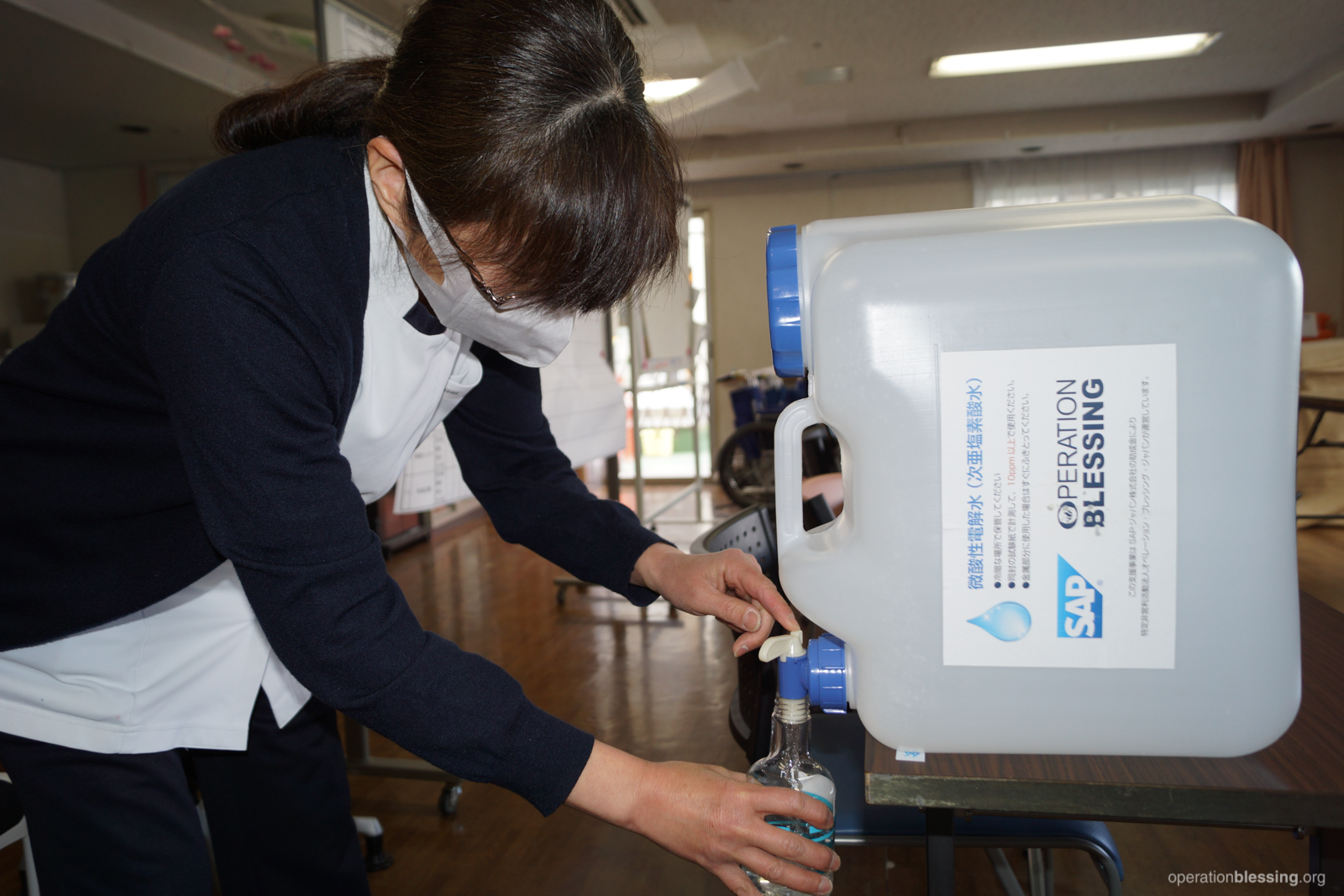By Don Thomson, National Director of Operation Blessing Japan
The coronavirus pandemic has hit virtually every country in the world. Even Japan, with its high standards of hygiene and social etiquette where many are accustomed to wearing facial masks to prevent spread of flu and colds even during ordinary times, has not been immune.
Many medical and welfare institutions have found their supplies of disinfectant dwindling, with no hope in sight for replenishing. These institutions include homes for the elderly, handicapped service agencies, day care centers, nursing homes, home care nursing service agencies, orphanages, kindergartens, child care centers, agencies that work with the homeless, and others that serve the vulnerable.
We at Operation Blessing Japan considered what we could do to help meet this need, and thanks to friends like you, we were able to make a difference. Trying to find disinfectant among dwindling supplies in the nation was not really an option. So we started to think, was there any way for us to actually produce our own disinfectant?
Chlorine Production Makes a Difference

I was familiar with Operation Blessing’s projects in other countries for producing chlorine, using salt and water with electrolysis equipment. This method had been highly effective as a disinfectant during the Ebola crisis back in 2014 – 2015 and was being produced at a number of OB offices around the world even in this crisis. I began to wonder if this was something we could also do in Japan. Producing chlorine had never been on our radar, as there really was never a need in this advanced country. But now the situation was different.
After doing some research, I found a local Japanese company that made the very equipment we needed. Hoshizaki Corporation, a major brand in equipment used by food manufacturers, kitchens in restaurants, hospitals, and other types of institutions, had a newly released machine that would produce free-flowing, safe, yet stable, and powerful type of chlorine called Slightly Acidic Electrolyzed Water (SAEW).
Producing Chlorine for Disinfecting During COVID-19

SAEW is a novel disinfectant, known to be effective against viruses and other pathogens. The machine offered by Hoshizaki produces chlorine at a rate of 4 liters a minute using electrolysis. The equipment is simply attached to a water supply, a small tank of hydrochloric acid and salt solution, and a power outlet. 10 liters (2.5 gallons) of solution will produce 5,200 liters (1300 gallons) of virus-busting chlorine.
Our team put together a distribution plan, and reached out to our partners and contacts across Japan, serving vulnerable communities. The chlorine produced at our base in Fukushima is stocked in 20-liter (5 gallon) plastic tanks, and then sent directly to the requesting institution by a door-to-door express trucking service.
Just in the first three weeks since starting the project we delivered 2,720 liters (680 gallons) to 133 institutions, all over Japan, serving a total of over 12,000 beneficiaries. The response has been overwhelming, with many more requests coming in from as far north as Hokkaido, and from Okinawa in the south, with the biggest concentrations in the Tokyo and Kansai areas which have been hit the most from the virus.
Distributing Disinfectant to Those in Need

We are receiving email messages of thanks from the directors of these institutions who are ecstatic with the speedy and timely support friends like you made possible. Japan’s national broadcaster, NHK, featured our unique project on their 5 o’clock evening news television programs on April 28, which reached up to an estimated 2.3 million households.
Thank you to all those who gave and are continuing to give to this important project, to help the vulnerable in Japan. Your support will build a sense of community and deliver hope throughout the country. This project is being done in partnership with SAP Japan who provided a significant donation to launch the project. SAP SE is one of Europe’s largest business-to-business software development companies with over 50,000 employees around the world.

